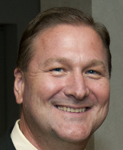5 Tips For Sustainable Wastewater Operations

By Kevin Westerling,
@KevinOnWater
When you think of mavens in the wastewater industry, David St. Pierre has to be near the top of the list. As executive director of the Metropolitan Water Reclamation District of Greater Chicago (MWRD), he not only runs the world’s largest wastewater treatment plant (WWTP) — the Stickney Water Reclamation Plant (1.4 BGD) — he does so boldly. The Stickney plant is an early adopter of nutrient recycling, turning would-be pollutants into a valuable, life-giving product. Phosphorus and nitrogen are captured and made into a fertilizer that can be sold, using the Ostara process, thereby creating revenue to put back into the operating budget.
The Stickney WRP in Cicero, IL, covers 570 acres of land and serves approximately 2.38 million people.
With so much talk of conservatism in the water/wastewater industry, it’s important to highlight utility managers who are pushing new ideas forward. This certainly isn’t to say St. Pierre and like-minded peers throw caution to the wind; quite the contrary, their decisions are grounded in what’s best for the utilities they manage and the communities they serve. The difference is that they’re willing to forge a new path, to diverge from the status quo. There has been significant technological advancement throughout the sector — in treatment techniques and equipment, instrumentation, SCADA and automation, energy optimization, etc. — that can help overcome problems that too many years of the ‘status quo’ has helped to create.
MWRD is leading the way. The District’s 2015 Strategic Business Plan is a five-year outline for moving utility operations toward “zero waste” status. The goals are in line with the Water Environment Federation (WEF) initiative to retire the concept of WWTPs (name and all) in favor of “water resource recovery facilities” (WWRFs). Chicago, in fact, plays host to 2015 WEFTEC conference, and St. Pierre is an integral part of WEF’s signature event because he walks the walk.
 In light of his experience and leadership status, I asked St. Pierre to share five simple tips that can help other utilities get started on the sustainability path, since those first few steps are often the hardest. Here are his suggestions, aimed at municipal managers:
In light of his experience and leadership status, I asked St. Pierre to share five simple tips that can help other utilities get started on the sustainability path, since those first few steps are often the hardest. Here are his suggestions, aimed at municipal managers:
- First, a leader must see the possibility of extracting value from all aspects of the process. In other words, adopt a new vision.
- Once you are open to ideas, explore new opportunities to develop product streams.
- Recognize that finances are a part of sustainable practices. Products should provide value — return on investment — to the community served.
- Partners are valuable. Private investment can provide private jobs and lift the economy. Be willing to allow others to win while you win.
- Communicate, communicate, communicate. As in all things, you need employees, community leaders, and citizens to catch the vision. Look for every avenue to get people excited and supportive.
As the above tips suggest, collaboration is vitally important to a zero-waste/energy net-zero future for wastewater facilities, and St. Pierre’s advice is shared in that very spirit.
It may take a while — even MWRD’s five-year plan is lofty — but as another great leader once said: “A journey of a thousand miles begins with a single step.”
